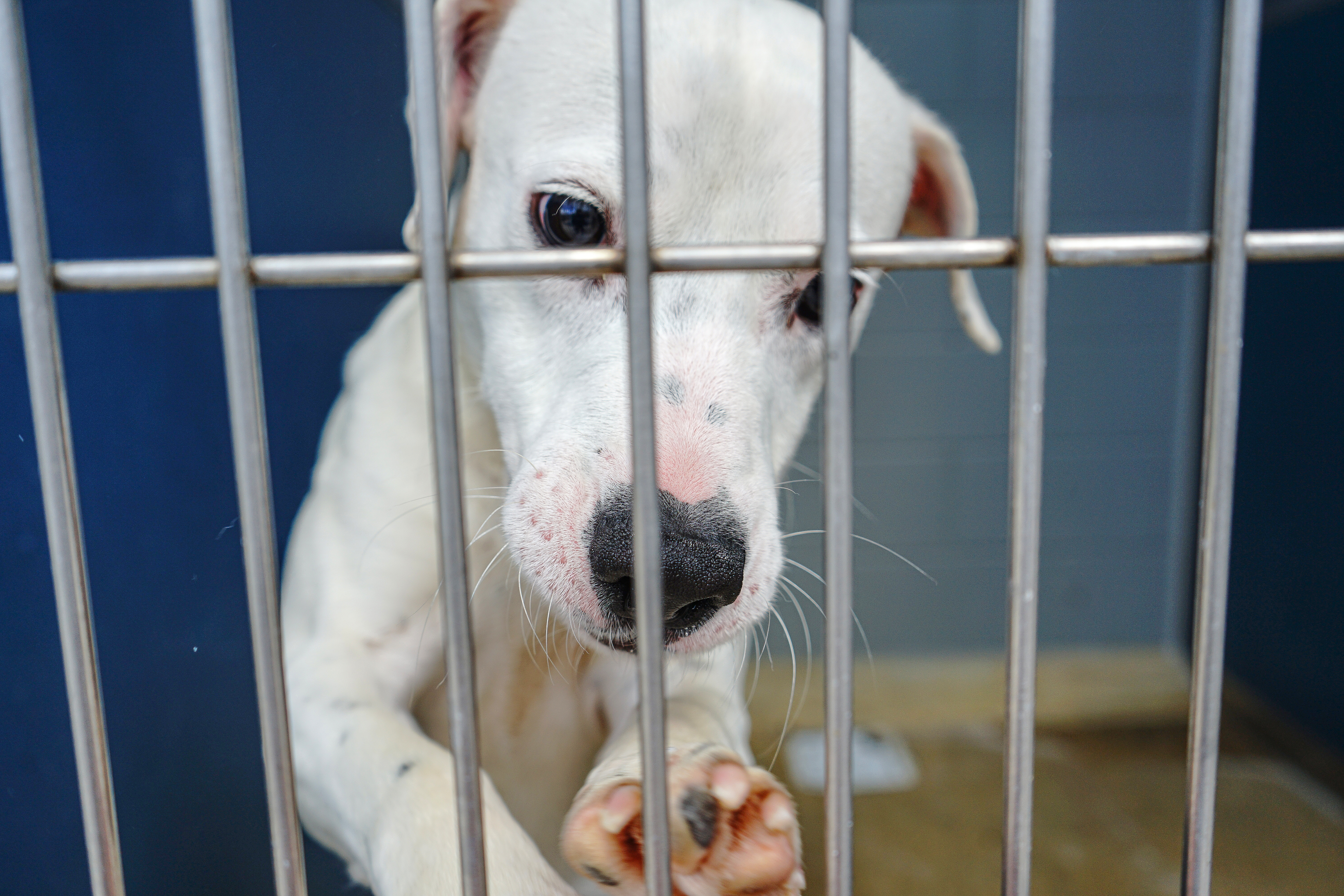A Hard Journey to Serentiy – Part 1
Published 5:18 pm Monday, September 16, 2024

- Many waterways and marshes can be found on Blackbeard Island.
|
Getting your Trinity Audio player ready...
|
I am going to take you to a special island today. A place where the waters of the Atlantic Ocean flow by. This land is beautiful, not just to see, but in a rare and sensuous way, that invites the past here to grab you anytime and anywhere. During the sunrise and at sunset, the mist prevails hiding the fine line between earth and sky, between fantasy and reality. Yes, today we go to Blackbeard Island. For our adventure, we need something strong, like pulled pork made in bourbon BBQ sauce and “ice water”. Grab my hand when you are ready to go.
Blackbeard Island appears on the map as a part of Sapelo Island, but it is not. Rather, it is a separate, small island that is a part of the wildlife refuge system of the United States Fish and Wildlife Service. A perfect place for conservation, it is more than four thousand acres of woodlands, lakes and marshlands that provides a safe haven for migratory water fowl, deer, turkey and quail. However, in the centuries gone by, its virgin forests, twisting waterways and salt marsh lands had provided sanctuary for a different type of wildlife, and humans whose chosen career was to be a pirate. Their specialization was robbing Spain’s treasure galleons of their caches of gold and silver, which they had previously stolen from unsuspecting Native Indian tribes.
As these pirates roamed the sea lanes of the Atlantic, between England, the West Indies, and the Caribbean, the many islands along the coast of Georgia, provided the perfect hideaway for them and for those who were the receivers of their stolen goods. This labyrinth of rivers, creeks and inlets offered a safe harbor for ships which were flying the black flag emblazoned with the skull and crossbones.
Trending
Most of these coastal islands were haunts of this infamous brotherhood and legend has it that many a cache of bloodstained booty along with the bodies of those killed, still lies buried in these forbidding marshes and forests. Other pirates, like Long John Silver and Israel Hand are believed to have contributed to the treasure and victims buried there. However, the island bears the name of Blackbeard, because this pirate liked this island above all of the others. Thus, it’s especially rich in stories about him and is believed to be the site of most of his buried treasures.
In the three hundred years of its known history, and as small as it is, Georgia’s Blackbeard Island has had quite a varied past. Its forests have also been a source of timber that was used in the building of sailing ships. Later, it became a place where a quarantine station was built and put into operation. Also, it was the site of a crematorium. Coming around in full circle, it now has gone back to nature and is a welcome refuge for wildlife. For a six mile long and almost two-mile-wide slip of swamp land, soggy bayous and sandy beaches, it surely has been a busy place! Doesn’t this sound like one of the most exciting journeys we have had yet?
According to a survey map from the 1760s, it was named Blackbeard Island at an even earlier time, perhaps as far back as 1718.
Starting around 1700, about 50 years before this island was officially named, the pirate, Blackbeard, wreaked havoc on shipping going to and from the Caribbean. He used this island as his safe haven and would position himself to sail along with the southern Gulf stream. It is believed that while he was on one of his illegal missions, he came ashore and chose this one island, out of all of Georgia’s many barrier islands, to be “his”. Yes, this now would be the place where he would hide his stolen treasure of gold, silver and jewels.
A famous claim of Blackbeard’s was that Satan was his brother. Those familiar with the island lore say that, “If Satan has not retrieved the loot of his bearded brother, it may still lie undiscovered”.
It is certain that, Blackbeard and his crew made frequent visits to this island. He found that in this place, Georgia is made up of a labyrinth of creeks, inlets and secluded marsh islands. As you can see, this would be ideal for pirates to practice their nefarious ways. However, it is not known for sure why Blackbeard choose this particular island. But, when we take a closer look at it, we see that in that time period, as now, it was very isolated. The murky swamps and the haunted bayous, all add to the mystery of this scrap of land. Therefore, the legend of Blackbeard’s buried treasure has persisted for over three hundred years, even though no treasure or even a sign of it, has ever been found.
Trending
Going farther ahead in time, this island moved on from its reputation as a pirate haven to the next step in its fascinating history. This is when the French became the owners, and in the year of 1778, a family lived there. However, it is believed that since the island was covered with venomous snakes, alligators, deadly spiders, thick and forbidding underbrush, as well as having many parallel dune ridges between which water collected during the wet season, it is assumed that no one else attempted to live there. These dunes are still there and represent earlier shorelines that have altered over time, caused by the changes in the water levels.
Next, the ownership of the island, which for many years was considered a part of Sapelo Island, also includes a Creek Indian tribe. Being nomadic, they mostly lived there during that time of year when the fishing was at its peak.
In a copy of the “Georgia Gazette”, dated March, 1800, Blackbeard Island was advertised at a Marshall’s Land Sale and from records in the Georgia State Library, we find that in this same year, the United States acquired this island for the purpose of cutting timber for shipbuilding. In 1808, full jurisdiction was ceded to the government by the State of Georgia.
Then, during the yellow fever epidemic that occurred at the beginning of the nineteenth century, when Savannah became a closed port, Blackbeard Island served as the South Atlantic Quarantine Station where ships were stopped and disinfected.
A little later, in 1810, the island was bought by the Navy at a public auction. They planned to use the live oaks that were growing there to construct wooden naval vessels. In public documents, as well as personal accounts, there are stories of journeys made by northern ship builders that describe the searches for the best lumber among these heavy, long-lasting oaks. In 1817, journalist James Keen from Philadelphia, Pennsylvania, was one person who kept track of these excursions. Right after the War Between the States, the activity on the island changed again and except for the occasional cattle stocking lease, Blackbeard Island was virtually abandoned.
In 1880, things began to stir again. This is when the Marine Hospital Service reopened the South Atlantic Quarantine Station at Blackbeard Island. This was because the spread of yellow fever by mosquitos had once again become a problem of epidemic proportions. The National Quarantine Act was instituted which resulted in the reopening of all stations, including the one on Blackbeard Island.
This time the South Atlantic Quarantine Station was operational from 1880 to 1910, with the peak year being 1900. Its duty was to protect the large city of Savannah as well as Darien and Brunswick from the mosquitoes that carry yellow fever. Here, the ships entering the Georgia ports were thoroughly searched for these disease carriers. This was because by now, it was known for sure, that yellow fever was mostly spread by mosquitos, which were usually introduced to the American mainland, by ships arriving from tropical Caribbean ports. Vessels bound for the American Southern Atlantic ports were required to report to Blackbeard Island for inspection and to be disinfected by using sulfur dioxide gas.
In 1894, the island was described as: “having thirteen buildings and twenty-three employees”. The report also told of a surgeon’s hospital on the south end of the island. It was staffed by a head surgeon and an assistant surgeon along with a male nurse. Others who worked on the island, included a carpenter and a stockman who took care of the herds of cattle which grazed in the tropical grass lands. Also, there was a cook, and a laundress.
A launch, the “Hygeia”, was used to transport supplies and those folks who disinfected the ships and their ballast, from the mainland to the island. It also served as a taxi and took those who had to go from one end of the island to the other, to their destinations. There also was an engineer, who operated a launch and another ship that was in charge of the ballast removal and the disinfecting of the station, itself. All of this was on the north end of Blackbeard Island. When this building was to be taken down, approximately ninety ship manifests were found. They showed that the vessels that were serviced there came from foreign ports all over the world and had stopped at Blackbeard Island to be cleansed.
Also, on the island, is a brick crematorium that was built in 1904. It was to be used to burn the remains of those who died from yellow fever. However, there were no records found in the hospital and there was no proof that it was ever used. Although this structure is falling apart, it is the only remaining building left from the thirteen-building complex.
By the 1900s, shipping around Blackbeard Island and Sapelo Sound, began changing again. Ships went from sail to steam and these vessels were larger and so was the amount of cargo that they carried. Also, the quarantine station on Blackbeard Island was deactivated in 1910, because of the discovery of a vaccine that eliminated yellow fever by Doctor Walter Reed and others.
In 1914, an executive order by President Woodrow Wilson made Blackbeard Island a wildlife preserve and later, its jurisdiction came under the care of the State of Georgia. In 1924, the Department of Agriculture reassumed jurisdiction and the island became a permanent wildlife refuge. Although the newspapers of 1931, refer to a proposal to transfer the island back to the State of Georgia, and under the care of McIntosh County, the change was never made and the island has remained a protected wildlife area.
On Blackbeard Island, over the years, the rumors of pirate treasure has been a part of her charm. People were so sure that Blackbeard had buried untold wealth here, that in 1934, a group of explorers received permission to dig for the treasure trove. Newspapers reported about the great excitement over this venture. However, although picks and shovels were busily digging during the ten days allowed, no discovery of pieces of eight, of guineas or doubloons or even gold jewelry was ever reported.
Today, the beaches of Blackbeard Island provide nesting places for the huge, protected sea turtles that come out of the ocean at night and go above the waterline to lay their giant eggs. Then, they cover over their nests with sand and go back into the depths of the ocean, leaving the eggs to be hatched by the warmth of the sun. The tracks of the turtles’ feet may easily be seen on the beach and at the end of the trail, you would find dozens of round, white eggs the size and shape of a ping pong ball. Thankfully, turtle egg hunting, formerly a popular diversion for vacationers in the 1920s, became prohibited by law in 1940. These turtles are still on the endangered species list and are vigorously protected. Disturbing them can mean a fine, imprisonment or both.
Lying in a quiet serenity, Blackbeard Island has been declared a National Wildlife Refuge and is now managed by the United States Fish and Wildlife Service of the Department of the Interior. She is secure in the protection from the hiders and seekers of gold. The forests and beaches that once heard the curses of the pirates and the rattles from their swords, now hear the cries of the sea birds, the rustle of the palm trees and the beat of the waves upon these beautiful, natural shores.





